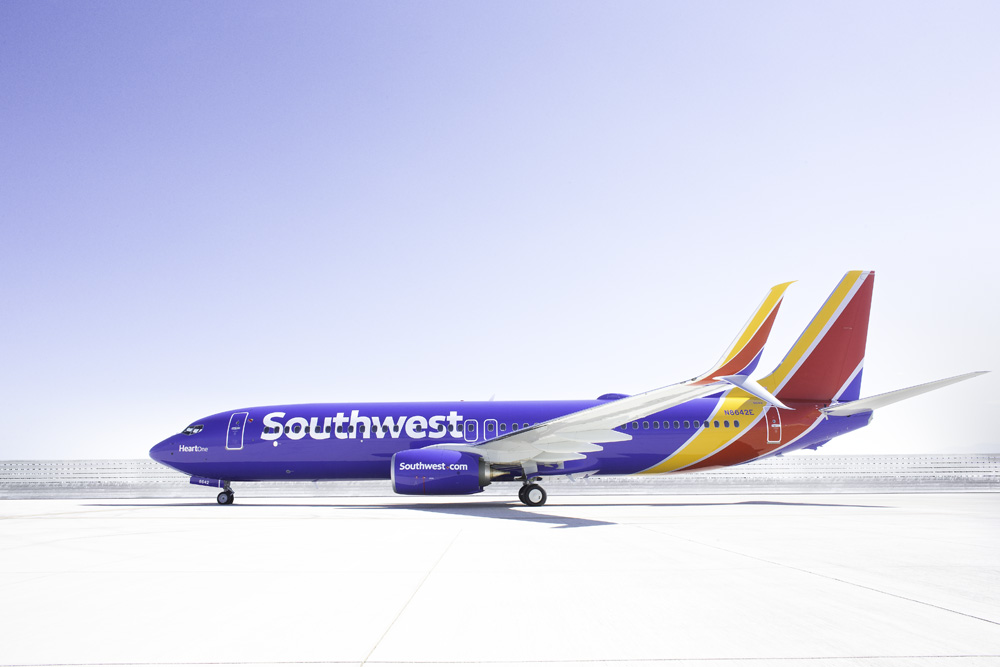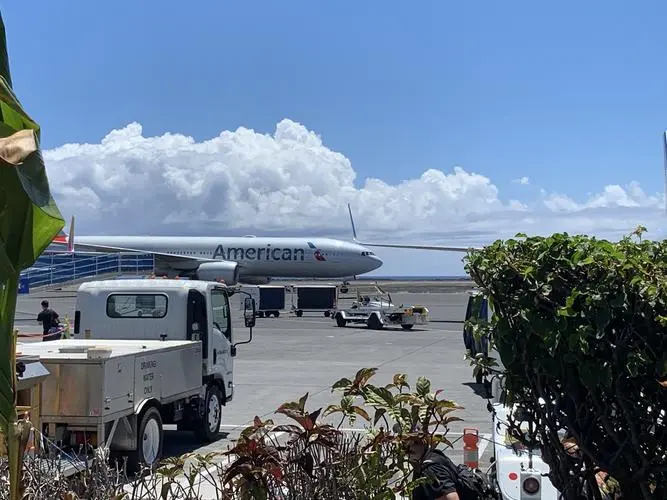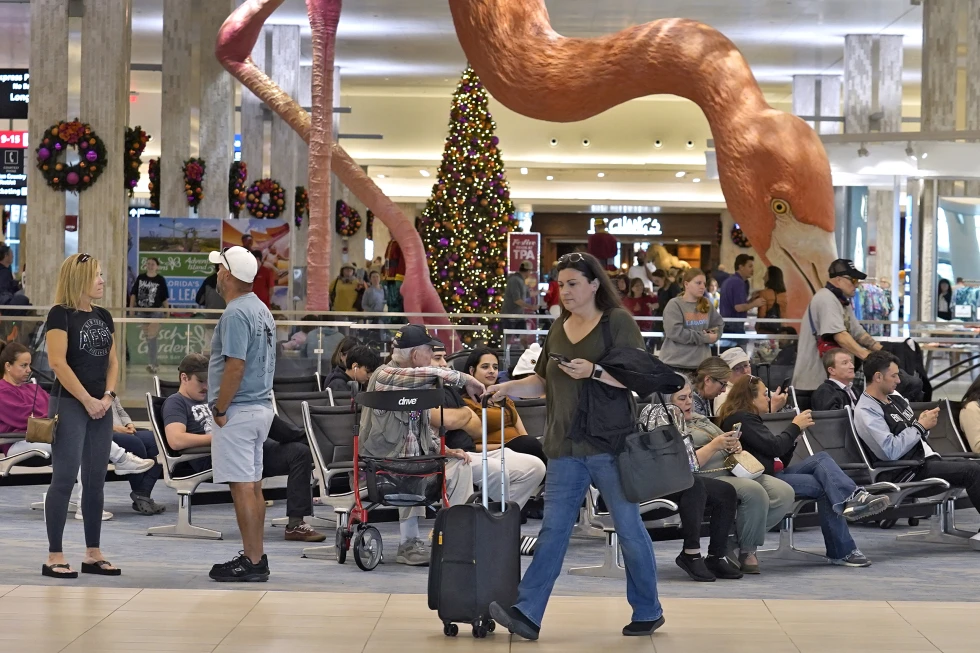This year, conditions for holiday travelers were generally favorable, with the exception of disruptions experienced by Southwest Airlines passengers.
The Christmas holiday saw a relatively smooth weekend for millions of people, a vast improvement over the previous year.
According to the tracking website FlightAware, only 157 flights within, into, or out of the U.S. were canceled, with 2,111 delayed as of late afternoon on Monday.
This represents a significant improvement over the previous year’s holiday travel disruptions.
In anticipation of the massive influx of travelers during the holiday season, U.S. airlines took proactive measures to mitigate potential delays and cancellations.
This included the hiring of thousands of pilots, flight attendants, and other personnel. The goal was to prevent a repeat of the travel chaos that marred the 2022 holiday season, particularly the Southwest Airlines debacle which left over 2 million people stranded.
The efforts made by airlines to bolster their workforce and resources in preparation for the holiday travel surge have evidently paid off.
With only a minimal number of cancellations and delays reported, it is clear that the proactive measures taken by the airlines have had a positive impact on the overall travel experience for passengers.
Despite the generally favorable conditions for holiday travel this year, it is imperative for airlines to remain vigilant and continue to invest in measures that ensure the smooth operation of flights during peak travel periods.
The disruptions experienced in previous years serve as a reminder of the importance of adequate preparation and resources to accommodate the surge in holiday travel.
In conclusion, while this year’s holiday travel conditions were largely favorable, the disruptions experienced by Southwest Airlines passengers highlight the need for ongoing vigilance and preparedness by airlines.
The proactive measures taken by U.S. airlines to mitigate potential delays and cancellations have proven effective, but it is crucial for the industry to remain committed to ensuring a seamless travel experience for passengers during peak travel periods.
Southwest Airlines, a major player in the aviation industry, recently faced operational disruptions over the weekend, with a significant number of flights being affected.
Despite the airline’s efforts to resolve the situation, a small percentage of flights remained canceled and a larger proportion experienced delays on Monday.
According to data from FlightAware, 693 flights were delayed, constituting 16% of the total flights, while only 2% were canceled.
The preceding weekend saw a more pronounced impact, with 426 flights being canceled and 2,689 flights experiencing delays, as reported by FlightAware.
A spokesperson for Southwest Airlines attributed these disruptions to dense fog in Chicago, which hindered the landing of planes.
Furthermore, it was anticipated that additional cancellations might be necessary on Monday, although a full recovery was expected by Tuesday.
These challenges in the airline industry coincide with a period of heightened travel activity, as predicted by auto club AAA.
The organization estimated that, between Saturday and New Year’s Day, a staggering 115 million individuals in the United States would embark on journeys spanning at least 50 miles (80 kilometers) from their homes, utilizing air or car travel.
This figure reflects a 2% increase from the previous year, indicating a growing trend in travel despite the prevailing disruptions.
The occurrence of these disruptions within the context of increased travel underscores the intricate and interconnected nature of the aviation industry.
Southwest Airlines, like many other carriers, operates within a complex web of factors, including weather conditions, air traffic, and passenger demand.
The impact of such disruptions extends beyond the airline itself, affecting the travel plans and experiences of millions of individuals.
In conclusion, the recent operational challenges faced by Southwest Airlines serve as a reminder of the dynamic and multifaceted nature of the aviation industry.
As the airline works towards a full recovery, it is crucial to recognize the broader implications of such disruptions, particularly in the context of heightened travel activities.
The resilience and adaptability of both airlines and travelers will continue to be tested as they navigate through unforeseen circumstances, ultimately shaping the landscape of the aviation industry.
The recent surge in holiday travel has sparked a renewed interest in the dynamics of transportation, particularly in the context of the ongoing COVID-19 pandemic.
The Transportation Security Administration’s (TSA) screening records, coupled with weather-related road challenges, have brought to the forefront an array of factors that impact the movement of millions of individuals during the festive season.
This essay aims to delve into the multifaceted aspects of holiday travel, examining the implications of record-breaking airport screenings, the influence of weather on travel conditions, and the predictions for road congestion during this period.
The TSA’s recent screening of over 2.6 million individuals on a single day underscores the magnitude of holiday travel in the United States.

Notably, the Thanksgiving weekend witnessed a remarkable milestone, surpassing pre-COVID travel numbers from 2019, with a staggering 2.9 million people screened on a single day.
This surge in air travel not only reflects the eagerness of individuals to reunite with loved ones but also signifies a significant step towards the revival of the travel and tourism industry.
The data suggests a growing confidence among the public in air travel, possibly propelled by the widespread availability of vaccines and improved safety measures implemented by airlines and airport authorities.
While air travel has seen remarkable growth, the situation on the ground has been marked by contrasting challenges.
The prevalence of milder weather conditions has contributed to the smooth operation of air travel, ensuring minimal disruptions and facilitating timely departures and arrivals.
However, the tranquility in the skies stands in stark contrast to the treacherous road conditions experienced in several regions on Christmas Day.
Accumulating snow and ice in the Midwest and Great Plains have led to hazardous driving conditions, with blizzard and ice storm warnings issued by the National Weather Service for various parts of Nebraska, South Dakota, and eastern North and South Dakota.
These weather-related adversities have not only posed risks to road safety but have also raised concerns about potential travel delays and disruptions, impacting the holiday plans of countless individuals.
Looking ahead, transportation data provider INRIX has forecasted the busiest days on the road to be Saturday, Dec. 23, and Thursday, Dec. 28.
These predictions highlight the anticipated surge in road traffic, potentially leading to congested highways and prolonged travel times for motorists.
The convergence of holiday travel, coupled with adverse weather conditions in certain regions, is likely to exacerbate the challenges faced by those embarking on road journeys during this period.
As such, travelers are urged to exercise caution, stay informed about weather updates, and plan their journeys meticulously to mitigate the impact of potential road congestion.
The recent trends in holiday travel underscore the intricate interplay of various factors that influence the movement of millions of individuals during the festive season.
The surge in air travel, propelled by record-breaking TSA screenings, reflects a growing confidence in the safety of air travel amid the pandemic.

However, the challenges posed by adverse weather conditions on the ground serve as a reminder of the unpredictability inherent in holiday travel.
As we navigate through this bustling period, it is imperative for travelers to remain vigilant, adapt to changing circumstances, and prioritize safety in their journeys.
In conclusion, the complexities of holiday travel, encompassing record-breaking air travel, weather-related challenges, and predictions for road congestion, demand a nuanced understanding of the dynamics at play.
By acknowledging these complexities, we can better prepare and navigate through the intricacies of holiday travel, ensuring a safe and enjoyable experience for all.
